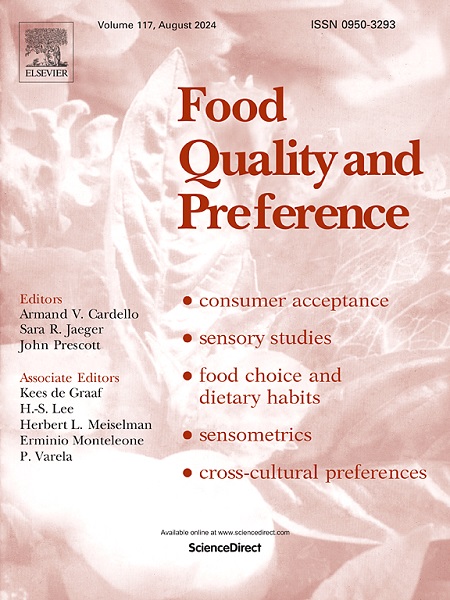Group sequential and adaptive group sequential tests in sensory and consumer studies
IF 4.9
1区 农林科学
Q1 FOOD SCIENCE & TECHNOLOGY
引用次数: 0
Abstract
Sequential methods have been suggested in sensory and consumer science before but have seen limited applications so far. This can be attributed to the fact that only sequential probability ratio tests have been described in detail, which are impractical as data are rarely collected and analyzed one data point at a time. As an alternative, group sequential methods collect and analyze data in batches, which better reflects common practice in consumer and sensory studies. Scarcer budgets require more efficient use of resources, and (adaptive) group sequential methods can play a significant role to achieve this. An abundance of related methods has been proposed primarily in the biometrical area, ranging from equal group sizes over different group sizes to adaptive designs which allow for modification of sample sizes or other aspects for subsequent study stages based on interim analysis results. Also, early stopping for futility is an option in case initial data are not promising; it is particularly useful when little is known about the (relative) performance of products upon planning the study.
We briefly review key concepts and methods, and we illustrate these for the simple but important example of paired preference tests with the objective to show superiority. Other applications in sensory and consumer research like, e.g., sequential monadic designs can follow the same concepts but might be technically more complex. Entertaining an interim analysis generally comes at the cost of lower power or increased maximum sample size. The benefit lies in the potentially significant savings when early data are clear enough either to support the desired outcome of the study, or to indicate that there is little hope for the study to succeed. Adaptive designs also offer the opportunity to fine-tune the final sample size based on early results, such as to limit the effort to what is really needed, or to expand on the effort to save a study from likely failure. We show how and why the different approaches are technically robust and what benefits they can bring to consumer and sensory studies.
以前在感官和消费科学中也曾提出过序列方法,但迄今为止应用有限。这可能是由于只对顺序概率比试验进行了详细描述,而顺序概率比试验是不切实际的,因为很少一次只收集和分析一个数据点的数据。作为一种替代方法,分组顺序法可以分批收集和分析数据,这更好地反映了消费者和感官研究中的常见做法。有限的预算要求更有效地利用资源,而(适应性)分组顺序法可在实现这一目标方面发挥重要作用。主要是在生物计量学领域提出了大量相关方法,从等组规模到不同组规模,再到适应性设计,允许根据中期分析结果对后续研究阶段的样本规模或其他方面进行修改。我们简要回顾了主要概念和方法,并以简单但重要的配对偏好测试为例进行了说明,该测试的目的是显示优越性。感官和消费者研究中的其他应用,如顺序一元设计,也可以遵循相同的概念,但在技术上可能更加复杂。进行中期分析通常需要以降低研究功率或增加最大样本量为代价。这样做的好处在于,如果早期数据足够清晰,可以支持研究的预期结果,或者表明研究成功的希望渺茫,那么就有可能大大节省成本。自适应设计还提供了根据早期结果对最终样本量进行微调的机会,例如将工作限制在真正需要的范围内,或扩大工作范围以挽救可能失败的研究。我们将展示不同方法在技术上是如何以及为什么是稳健的,它们能为消费者和感官研究带来哪些益处。
本文章由计算机程序翻译,如有差异,请以英文原文为准。
求助全文
约1分钟内获得全文
求助全文
来源期刊

Food Quality and Preference
工程技术-食品科技
CiteScore
10.40
自引率
15.10%
发文量
263
审稿时长
38 days
期刊介绍:
Food Quality and Preference is a journal devoted to sensory, consumer and behavioural research in food and non-food products. It publishes original research, critical reviews, and short communications in sensory and consumer science, and sensometrics. In addition, the journal publishes special invited issues on important timely topics and from relevant conferences. These are aimed at bridging the gap between research and application, bringing together authors and readers in consumer and market research, sensory science, sensometrics and sensory evaluation, nutrition and food choice, as well as food research, product development and sensory quality assurance. Submissions to Food Quality and Preference are limited to papers that include some form of human measurement; papers that are limited to physical/chemical measures or the routine application of sensory, consumer or econometric analysis will not be considered unless they specifically make a novel scientific contribution in line with the journal''s coverage as outlined below.
 求助内容:
求助内容: 应助结果提醒方式:
应助结果提醒方式:


